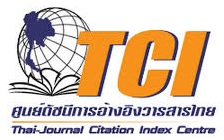The Effectiveness of Smart Educational Media Creator for Supporting Higher Order Thinking Skill of Medical Students at Suranaree University of Technology
DOI:
https://doi.org/10.55766/WEBZ7377Keywords:
High order thinking, medical students, instructional media, effectivenessAbstract
Smart Educational Media Creator (SEMC) is an intelligent teaching tool promoting high order thinking skills in science and technology fields. It is a one type of instructional
media emphasizing on critical thinking skill in order to support a self-learning experience. The objective of this research is to study the effectiveness of SEMC used in Nervous system III course in medical students at Suranaree University of Technology. The results demonstrated that the sample group (79 medical students in sophomore year aging 18-20 years old and representing males in majority, 54.43%) showed an average grade prior taking individual classes mostly at 2.50-3.00; and the average score of the entire class after taking individual classes from Cornell critical thinking test (level Z) showed an increased number but not at statistically significant difference of 0.05. However, a further analysis of average grade in grouping students according to their grades revealed that students in specific groups of 2.50-3.00 and 3.00-3.50 grade showed higher score with a statistically significant difference of 0.05. These two groups represent a majority (70.89 %) of sample group. The samples’ opinions on content of the media, duration per a lesson, additional knowledge acquired from class, freedom in choosing class options, promptness
of computer equipment, and convenience in using the system were at high level. This instructional media, SEMC, benefits to learners in supporting their thinking skill and
responding to student-centered learning method which, in turn, promotes learning habit and eventually a self-learning education.
References
DeVries, R. and Kohlberg, L. (1987). Programs of early education: The constructivist view. New York: Longman.
Harden, R. (2002). Learning outcomes and instructional objectives: is there a difference?. Medical teacher. 24(2): 151-55.
Harden, R. and Crosby, J. (2000). AMEE medical education guide no.20: the good teacher is more than a lecturer-the twelve roles of the teacher. Medical teacher. 22(4): 334-47.
Insa-ard, S. (2010). Development of a learning object model to enhance knowledge construction and critical thinking skills of Suranaree University of Technology’s undergraduate students. Dissertation of Doctoral Degree in Educational Technology and Communication, Chulalongkorn University.
Kammanee, T. (2002). Science of education: effective learning process by constructivism. (In Thai). Bangkok: Chulalongkorn University Press.
Perkins, D. (1999). The Many Faces of Constructivism. Education Leadership. 57(3): 6-11.
Robert, HE. (1991). Critical thinking: A streamlined conception. Teaching philosophy. 14(1): 5-25.
Saduakkan, P. (1999). Learn to create a problem and solve it: applying traditional Thai cultures in modern days (Constructivism). (In Thai). Academic journal of Bureau of academic affairs and educational standards. 2(1): 69-74.
Saunders, W. (1992). The constructivist perspective: Implications and teaching strategies for science. School Science and Mathematics. 92(3): 136-140.
Siritawee, J. (1998). Student activity management techniques for building constructivism. (In Thai) Academic journal of Bureau of academic affairs and educational standards. 1(9): 37-52.
The Center for Educational Innovation and Technology, Suranaree University of Technology. (2013). Document usage of SUT Smart Educational Media Creator. (In Thai). Nakhon Ratchasima: Suranaree University of Technology.
Downloads
Published
Issue
Section
License
Copyright (c) 2017 วารสารเทคโนโลยีสุรนารี Suranaree Journal of Social Science

This work is licensed under a Creative Commons Attribution-NonCommercial-NoDerivatives 4.0 International License.









 ThaiJO
ThaiJO